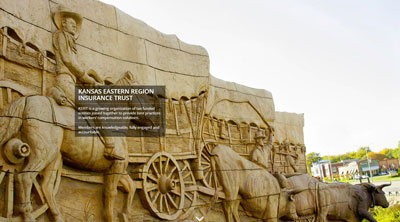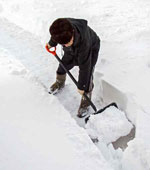-November-2015.jpg)

Atchison County
Chanute
Coffeyville
Derby
Fairway
Gardner
Johnson County Parks and Recreation District
Junction City
Lansing
Leavenworth County
Leavenworth
Leawood
McPherson
Merriam
Mission
Ottawa
Shawnee
Winfield
The Kansas Eastern Region Insurance Trust provides a self-insured workers compensation program for public sector organizations.
Tom Brown, Chair
Mayor
City of McPherson, 620-245-2535
Jamie Chism, 1st Vice Chair
Human Resources Director
City of Winfield, 602-221-5500
Marilynn Evenson, 2nd Vice Chair
Human Resources Director
City of Coffeyville, 620-252-6121
KERIT QUARTERLY is produced at
Mid-America Regional Council. Contact Laura Bogue, editor, at 816-701-8269.
 KERIT rate decreases
KERIT rate decreases
At the October 13 meeting of the KERIT Board of Trustees, the board approved a 5 percent overall premium rate decrease for 2016. This decrease was based on the most recent actuarial study showing continuing lower claim costs, and demonstrates the success of the membership’s strong commitment to loss prevention, safety and effective claim management. Additionally, legislative reforms enacted in 2011 and 2013 continue to result in fewer claims and costs.
KERIT’s membership continues to outperform peer groups in Kansas. Using an industry benchmark known as Experience Modification Factor, KERIT's collective modification factor is 20 percent lower than other municipalities and counties. This benchmark is a significant part of KERIT members' final premium calculation, which compares individual members' claims over three years, based on type of operation, to other municipal operations in the state of Kansas.
KERIT's annual meeting — Dec. 8, 2015
Each December, the KERIT Board of Trustees holds its annual meeting. At this meeting, each member has the opportunity to update its appointment for trustee and alternate trustee. In addition, the trustees will be asked to sign the annual conflict of interest forms.
KERIT has several committees — Loss Control, Marketing, Finance and Policy — and trustees are encouraged to participate in one or more committees to advise the board and help shape the future of KERIT and its services to the members. At the meeting, the Board Chair will ask for volunteers to serve on the committees in 2016.
The annual election of officers will be held at the March 8, 2016 meeting.
KERIT premieres new website
 In January 2015, KERIT members decided that the KERIT website was in need of an update. They wanted a site that was more user-friendly and could work as a marketing tool to showcase the benefits of KERIT to potential members.
In January 2015, KERIT members decided that the KERIT website was in need of an update. They wanted a site that was more user-friendly and could work as a marketing tool to showcase the benefits of KERIT to potential members.
Working with CBIZ, KERIT contracted with Space Raptor to developed a new website that would better highlight the goals of the organization and serve as a recruitment tool. The new site, rolled out in May 2015, uses more photographs and is user-friendly across all platforms, including mobile phones and tablets.
In addition, the site will soon offer new features for members, including access to meeting minutes, financial reports, a newsletter archive and forms.
See the changes at kerit.org.
MSDS Online conversion progress
![]() KERIT has used MSDS Online for nearly a year and, by now, most KERIT members have converted their paper-based safety data sheets (SDS) and material safety data sheet (MSDS) retention systems to the database offered through MSDS Online. To ensure that everyone can access MSDS Online, employees should save the KERIT MSDS Online link to their browser favorites, or put a shortcut icon on their computer desktops.
KERIT has used MSDS Online for nearly a year and, by now, most KERIT members have converted their paper-based safety data sheets (SDS) and material safety data sheet (MSDS) retention systems to the database offered through MSDS Online. To ensure that everyone can access MSDS Online, employees should save the KERIT MSDS Online link to their browser favorites, or put a shortcut icon on their computer desktops.
A friendly reminder: If you have not yet converted from paper retention of MSDSs/SDSs to the MSDS Online resource, you will need to covert to MSDS Online to receive the full KERIT PLUS Scorecard discount.
If you have any questions, please contact a member of your safety committee or Travis Bennett at tbennett@thomasmcgee.com.
Calculating your Return-on-Investment (ROI)
Why is safety It minimizes accidents, lost workdays and workers' compensation costs. It promotes regulatory compliance and avoids costly fines and lawsuits. It improves productivity and the quality of products and services. It keeps your organization on the cutting edge, which gives you the edge over the competition. |
One of the biggest challenges of overseeing a safety and health program is proving that the program is worth its cost. One of the best ways to prove its worth is to demonstrate a positive Return-on-Investment (ROI).
ROI answers the vital question top management wants to know: "For every dollar we invest in the safety program, how many dollars are we getting back?" To ensure a program is seen as beneficial to an organization, that question must be answered with hard data, by showing the percentage of profit made or savings earned for every dollar spent.
Here is a simple formula for measuring safety training ROI:
ROI (%) = ((Monetary benefits–Training Costs) ÷ Training Costs) x 100
Example: Assume that, as a result of a new safety training program, an organization's accident rate declines 10 percent, yielding a total annual savings of $200,000 in terms of lost workdays, material and equipment damage, and workers' compensation costs. If the training program costs $50,000 to implement, the ROI would be 300 percent.
ROI = ((200,000 – 50,000) ÷ 50,000) x 100 = 300%
In this example, for every $1 spent on training, the organization gained a net benefit of $3.
This simple formula will help convince the people at the top that a safety program is worth the cost — and that's when ROI analysis can be your best ally.
Source:GEMI. Clear Advantage: Building Shareholder Value. Washington, DC, February 2004; pp. 10, 26-32., 2 OSHA. 2003. Safety and Health Management Systems eTool (accessed March 1, 2012) www.osha.gov/SLTC/etools/safetyhealth/mod1_estimating_costs.html).
 Avoiding frostbite
Avoiding frostbite
For organizations that have employees working in the cold, winter can be a dangerous time of year. Frostbite is a serious concern, but it’s easily avoided with a few simple precautions.
Frostbite is caused by prolonged exposure to cold temperatures and low wind chill factors, but even a brief exposure to exceedingly cold and wet conditions can cause frostbite. The risk of frostbite can be reduced by dressing in warm, loose-fitting layers, and protecting hands, feet, nose and ears from the cold.
The symptoms of frostbite include numbness, skin discoloration, burning and tingling. If these symptoms occur, move to a warm area immediately and remove wet clothing. Place the affected area in warm (not hot) water until the skin softens and is no longer numb. Wrap the affected area and seek medical help.
 Learn from near accidents
Learn from near accidents
Nearly everyone has breathed a sigh of relief over a close call — almost tripping over a loose tile or an obstruction, or walking around a spill. These near accidents could be overlooked as simply a “lucky break” or a minor inconvenience, but smart employees recognize them for what they are: a warning of a potential problem. Those small problems, left uncorrected, could lead to a big problem and a serious injury.
Avoid accidents by paying attention to near accidents. Always be safety-minded: correct a problem that caused a near accident, and voice your concerns over potential hazards.
KERIT members may access near-miss forms at www.kerit.org/wp-content/uploads/2015/11/KERIT-Near-Miss-Report-with-Signature.docx.
